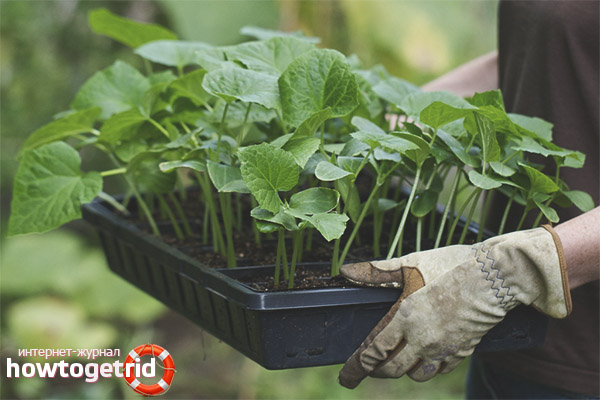The content of the article
Cucumber Atlantis F1 is a fairly early, but at the same time very productive hybrid. It was possible to get such an interesting variety by breeding it from Bejo Zaden. This variety appeared in state accounting about 15 years ago. The culture is intended mainly for cultivation in gardens and vegetable gardens, as well as in areas near estates and in small farms.
The main qualities of the variety
Atlantis F1 is a hybrid, one of the advantages of which is rapid maturation. At the same time, the variety is quite fertile, from the bushes of such plants you can get a very good harvest. Most fruits are used fresh, but they are also suitable for pickling.
As for the taste and commercial qualities, Atlantis is not deprived of them. The hybrid has good immunity, due to which it does not respond to various diseases, even those common as cladosporiosis, mosaic virus, powdery mildew and real.
The fruits of Atlantis are medium in size. In length, they reach 10-12 centimeters, the diameter is about 3-3.5 centimeters. The shape of such cucumbers is traditionally cylindrical, the surface is covered with small tubercles. By weight, fruits average 95-100 grams. The pulp has a fairly dense structure, while juicy and crispy. The taste is pleasant, bitterness does not occur. The peel is usually dark green in color.
The bushes of such cucumbers turn out to be quite powerful, the average climbing ability. From the moment the first seedlings appear until the first crop is received, as a rule, about 43-45 days pass. The yield of the variety is not bad, with one square meter you can get up to 10 kilograms of fruit.
Pros and Cons of the Hybrid
The popularity of Atlantis F1 cucumbers among gardeners and gardeners is due to the presence of a considerable number of advantages:
- The hybrid is distinguished by early ripening of the fruit.
- You can use cucumbers both for fresh consumption and for the preparation of pickles.
- High fecundity.
- Good immunity, plants are able to withstand many diseases.
- Good appearance, which allows you to sell such cucumbers well.
It is also important to note that after harvesting, the fruits retain their appearance and other qualities for another two weeks, which is also very convenient.
Despite the many positive qualities, there are also some disadvantages to this hybrid. For example, if you grow Atlantis cucumbers in greenhouse conditions in winter, they may not have enough sunlight, as a result of which the plant will stretch too much and lose its productive ability. Fruits, of course, will appear, but in much smaller quantities. In general, this variety can be grown both in soil in the open territory and in special constructions - greenhouses and hotbeds.
How are seeds sown?
Since the Atlantis hybrid develops and grows rather quickly, very often its seeds are planted directly in the ground. It is best to plant them in already warmed soil, the temperature should not be below +15 degrees. At the same time, the air should be already quite warmed up, from about +18 degrees. It is advisable to choose the soil moist, so the seeds will germinate faster. You should not plant cucumbers too deep, a depth of 2-3 centimeters will suffice.
After the sowing of the seeds is done, it is better to cover them with a film or lutrasil. Also, an excellent result is given by landings on the so-called "warm" beds.
Seedling method of growing

Very high productivity can be seen in Atlantis cucumbers, if they are planted with the seedling method. It is worth using the trellis method of cultivation, subject to timely planting, you can get a crop much earlier in comparison with the seedling method. For growing seedlings, you can use special cassettes, this method is very convenient.
Finished planting material is more dependent on how well the soil has been prepared. First of all, the composition is very important, it must include:
- peat;
- sand;
- humus;
- sawdust;
- mullein, where ammonium nitrate, lime, superphosphate and potassium sulfate are also added.
It is important to monitor the acidity of the resulting mixture, it should not be more or less than 6.7 pH.
Seedlings require some care. First of all, this, of course, is regular watering. It is also very important to periodically feed plants using complex fertilizers. Sometimes seedlings grow poorly due to a lack of light, so plants need to be lightened up as well. As a rule, a special backlight is set in the morning, the maximum duration of such a session is 7 hours. Before planting the finished seedlings in the soil, be sure to harden the plants, otherwise they will disappear.
When to plant seedlings or seeds?
In general, planting in greenhouses, where there are sources of heat, can be done already in mid-April, although only seeds are planted at such a time. It is better to plant seedlings a bit later, around the beginning of May.
If the landing goes directly to the ridges under a film coating, then it is better to carry out these procedures in the second half of April. Seedlings are usually planted in late May, when the soil is already quite warm.
Landing on open ridges is best done no earlier than in early May, this applies to seeds. Ready seedlings are placed here no earlier than in early June. If you plant cucumbers on open ridges, it is very important to monitor the optimum temperature of the soil. In addition, do not forget about the rules of crop rotation.
Video: Atlantis F1 cucumbers










Submit